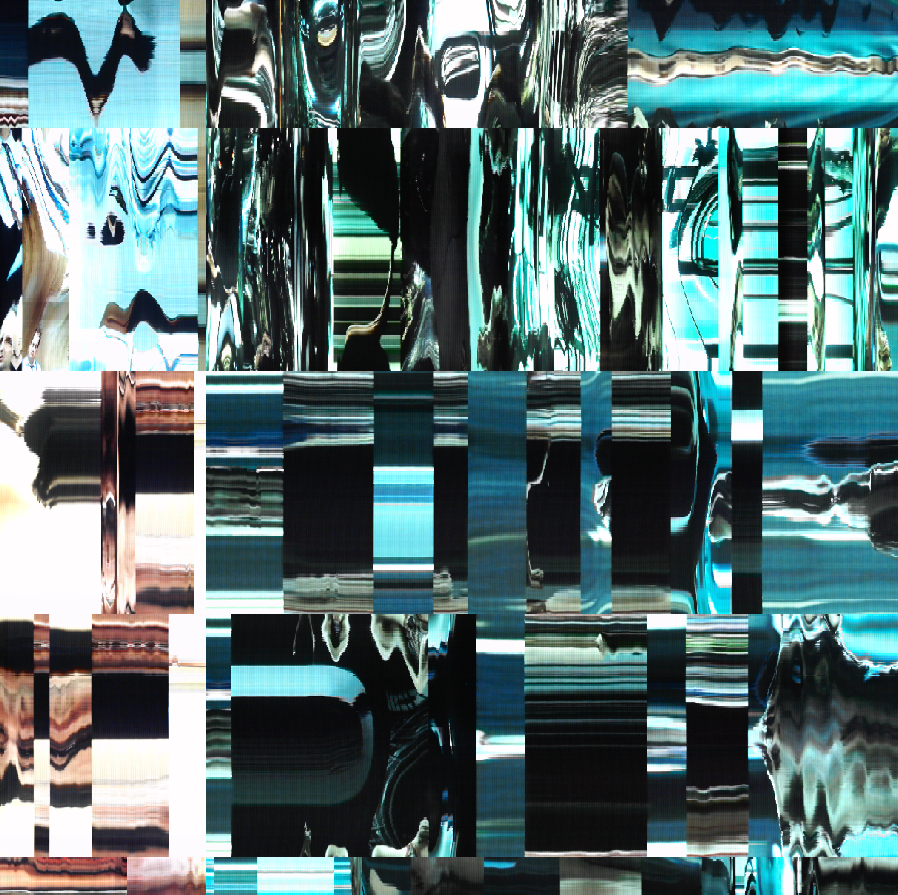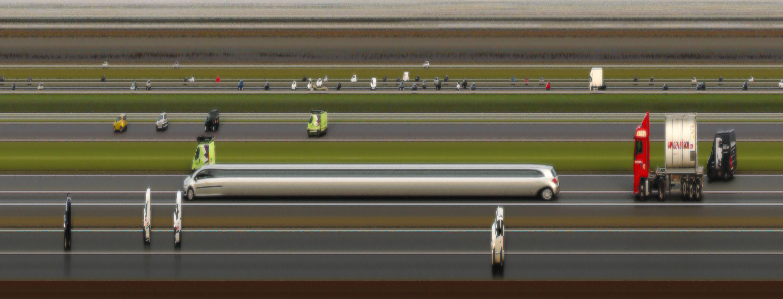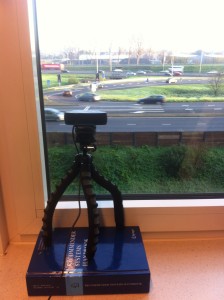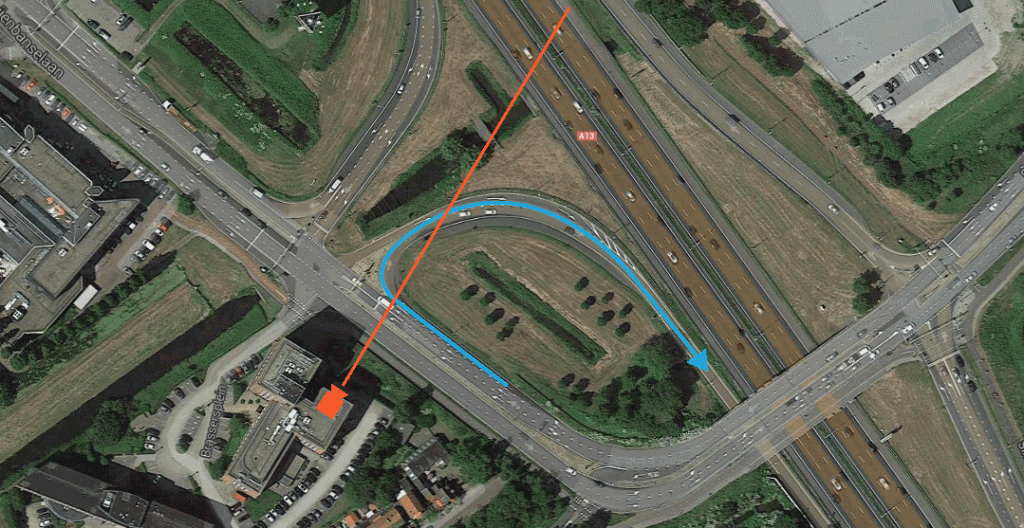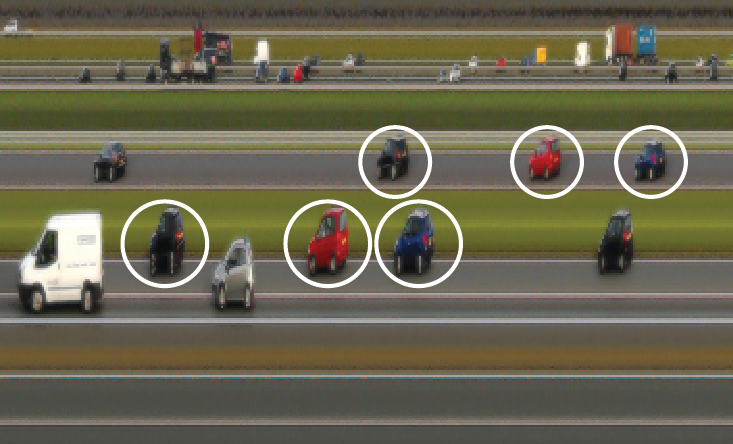At the KIKK festival, I was inspired by the work of Adam Magyar who uses slit-scan photography to make beautiful serene and surrealistic art. The technique is simple: you take one column of pixels from a moving image (for example from a webcam). You do this say 20 times per second and put all these columns next to each other. This forms an image like the one above. Every column of pixels in this image is taken of the exact same spot, but they are all taken at a different point in time. The screen capture below may clarify at bit more. It shows the tool I built in OpenFrameworks for creating the slit-scan images.
The image below is about 5 minutes of scanning traffic (click the image for the high-res version).
It is taken from my office window, facing one of the busiest stretches of highway in The Netherlands (the A13 between Rotterdam and The Hague).
The orange line on the map below indicates the line (the ‘slit’) that is scanned from the video.
Cars become longer in the image when they drive slow (or stand still for a traffic light) en shorter when they drive faster. Some cars appear twice in the image, for instance those that follow the blue line. It crosses the orange line (the slit-scan) twice, as can be seen in the image below.
Recording video from a TV screen with this slitscan technique gives nice abstract images. This is the setup:
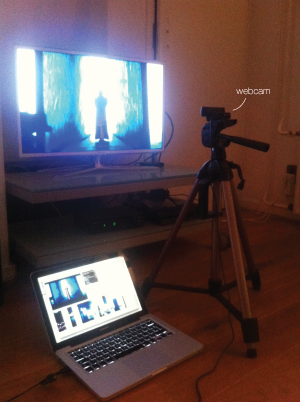
And this is the result (it is a slitscan of Madonna’s Rain video):

But why stick to a scanning a line of pixels, and not other forms like a circle?

In every frame of the video, the pixels laying on the circle are taken and put in a straight line, one next to the other, just like in the ‘linear’ slit-scanning. This gives an even more abstract (and interesting?) image:
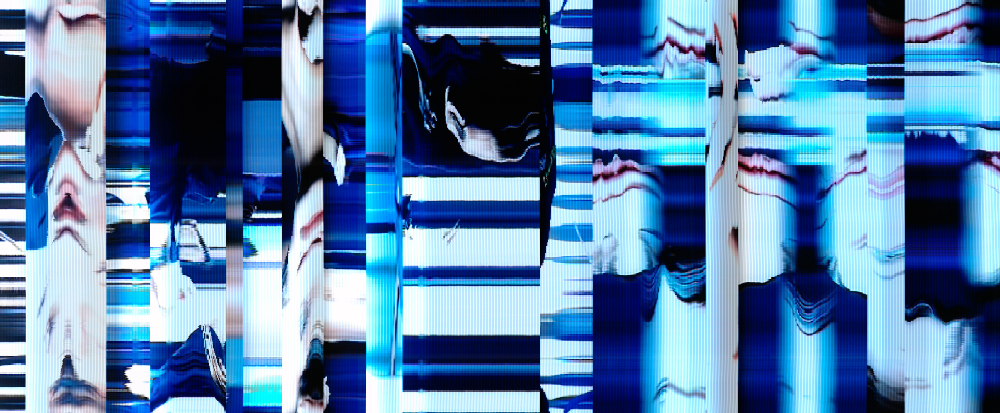
The next video shows the tool I built in OpenFrameworks that allows me to switch between linear and circular slit scanning, and adapt the angle and length of the line as well as the radius of the circle.
This process of slit-scanning produces very long images, especially when slit-scanning a whole movie. I did this with the movie Fight Club, resulting in 240000 lines, i.e. a slitscan image of 240000 x 250 pixels. There are several techniques to ‘fold’ such an almost 1-dimensional image into a 2D plane. These are called ‘space filling curves‘. For folding the slitscan image of Fight Club I used the Peano curve (picture taken from Wikipedia):

I turned it 90 degrees clockwise, so the sequence starts at the top left, zigzags down, ending at the lower right. This image shows the sequence by using color. Starting at the top left in red, going through orange, yellow, green, blue and purple, ending in red again.
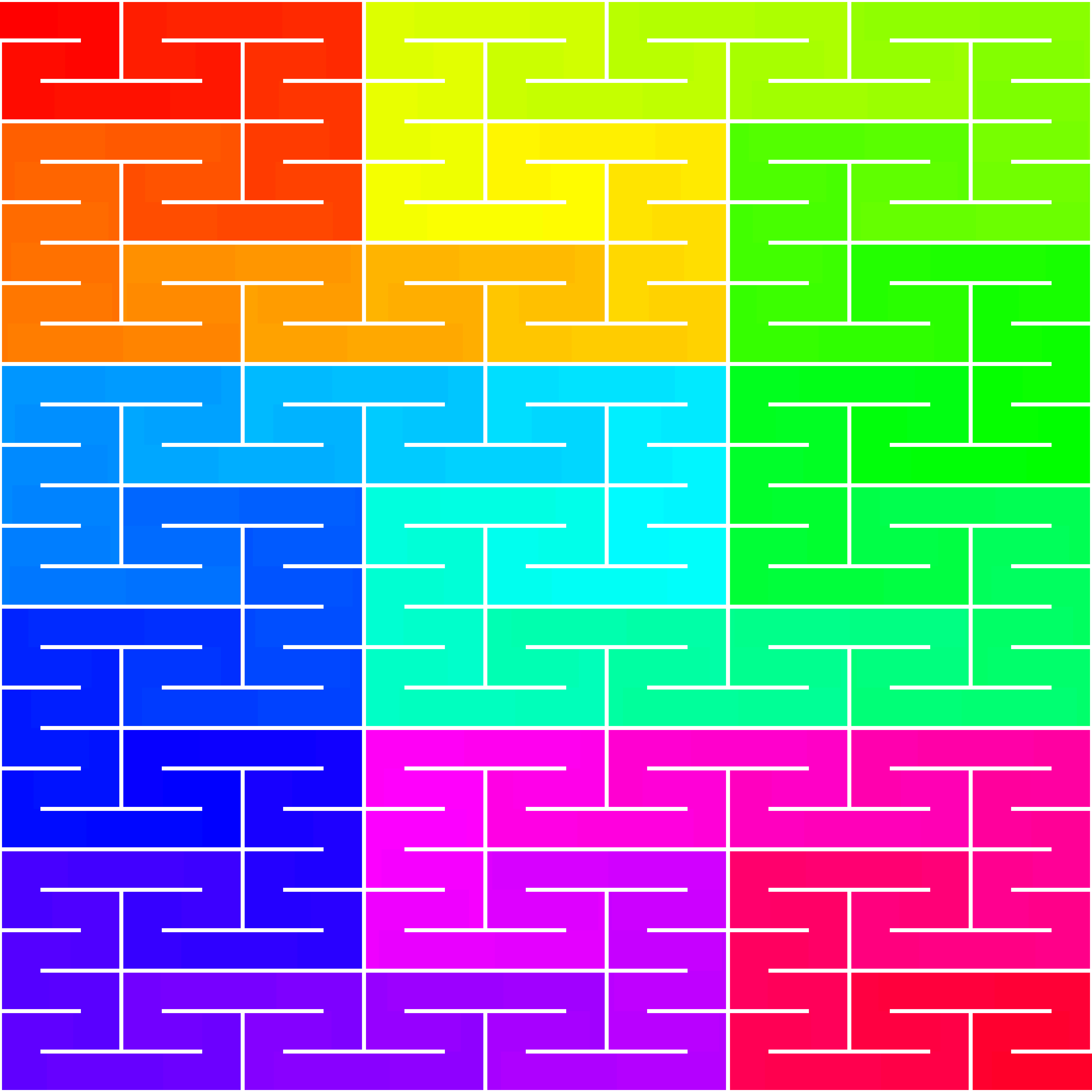
The resulting image for Fight Club is:
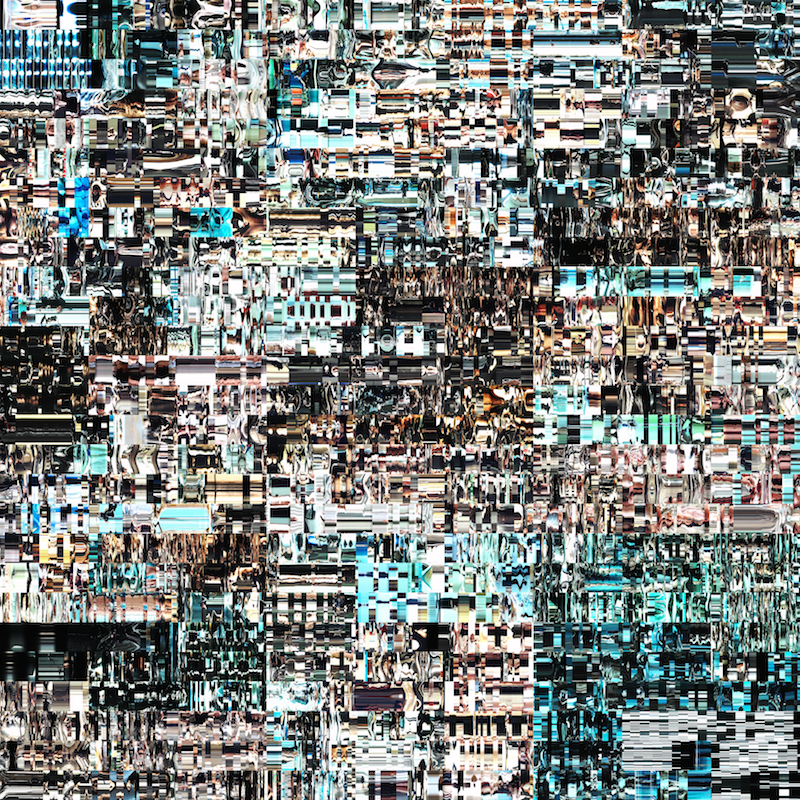
This is the whole movie slit-scanned with a circle. A detail from the image:
